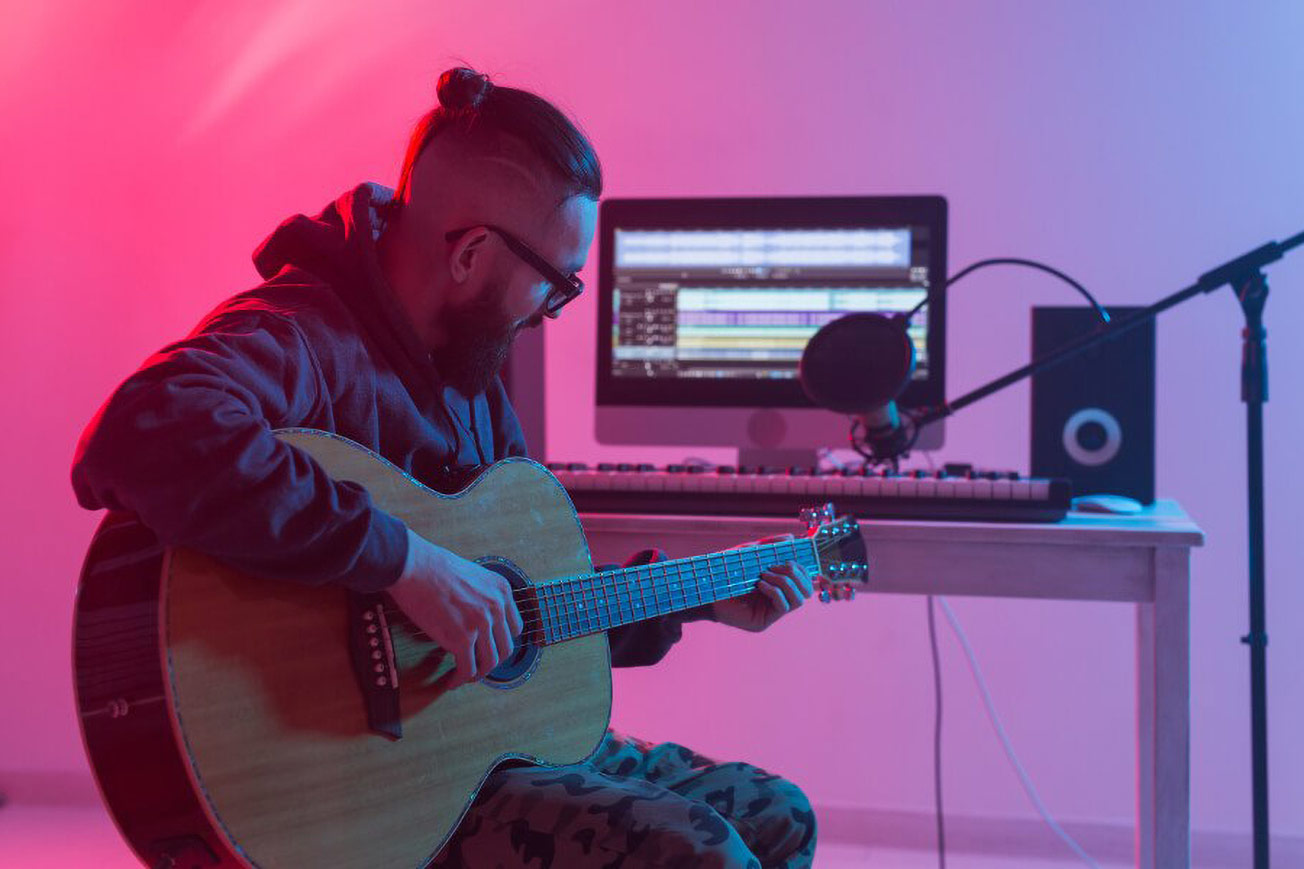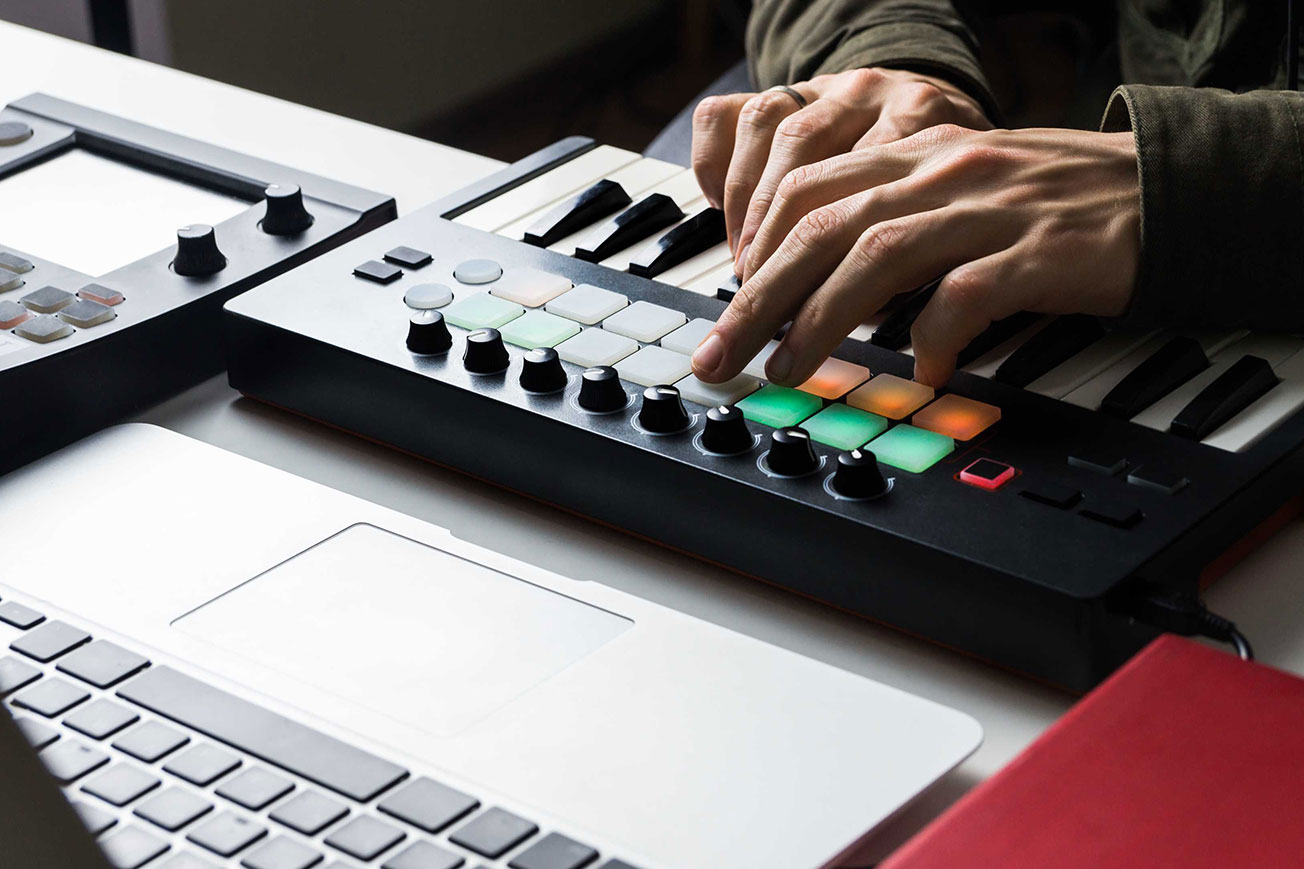What is a verse in a song, and what is its purpose? Learn about song structure and how to identify the verse in this basic music theory guide.

What Is a Verse in a Song?
A verse is part of the song form that propels the narrative forward. It provides the listener with more depth and understanding about the song.
Song verses commonly repeat like the chorus. However, songs can have one or more different verses. Compared to a chorus, verses have different lyrics on each repetition but keep the same melody. Whereas the lyrical and instrumental elements of a chorus generally remain the same.
Within basic song structure, the verse exists against repeating elements like the chorus or bridge to give a song more purpose. Without verses, songs become repetitive and incomplete.
Moreover, the verse supports the overall theme of the song, keeps it interesting, and gives listeners more information. It deepens our feelings or understanding of the song and allows us to relate to the story more.
How Many Bars in a Verse?

Like with any numerical aspects of a song, there are no right or wrong answers. However, there are methods to consider to help determine the length of a verse in a song. For example:
1. Follow Standards or Break the Rules?
As a general rule, the number of bars in a verse are divisible by eight. For example, it’s common to hear verses in modern music that are 8, 16, 24, or 32 bars long. However, these metrics are not hard rules in music theory. There are songs with odd number verses.
The idea of even-numbered bars stems from centuries of musical evolution. Over time, even-numbered bars become universally accepted length for a musical phrase because odd-numbered bars feel incomplete.
When constructing a verse, try starting with an eight-bar phrase. Then piece numerous phrases together until you’ve developed a verse that sounds right in the song. Whether it’s 12 or 24 bars, do what sounds good!
2. Consider the Length of the Chorus
Consider the chorus length when determining the number of bars in a verse. These two song parts don’t have to be the identical length, but there has to be a balance between them.
Often, the verse and chorus will have a similar length. Although, it’s also common to have a longer verse to give the narrative time to develop.
Think about a song in the narrative form. The verse dictates what’s happening in the narrative, and the chorus dictates why it matters. So, if the verse is overly long compared to the chorus, the song’s meaning may get buried. Also, the song can lose value if the verse is too short against a long chorus.
The best rule of thumb to follow is balance. Effective verses incite a sense of anticipation for the rest of the song.
3. The Song’s Genre Can Determine Verse Length
Consider the genre of the song when dictating verse length. In general, all verses have the same melody but introduce a new song lyric. However, this approach can change depending on the genre.
For example, rap verses rarely include a melody because the intention is to display the emcee’s lyrical skill. Therefore, some instrumentation may get stripped back.
Also, rap verses are much longer than a typical pop song. The longer verse gives the emcee more time to tell their story and display their talent.
Conversely, pop music tends to have shorter verses. For example, many modern pop songs are 2-4 minutes long. Therefore, there’s not enough time for longer verses.
4. Consider the Song Length to Establish the Number of Bars in a Verse
Song length can determine how many bars are in a verse. People’s attention spans are increasingly becoming shorter. As a result, the average length of hit songs is decreasing. For example, most of the songs on the Billboard Top 100 are under four minutes.
If you’re writing a shorter song, consider crafting a verse that doesn’t drag on. For example, a typical pop song has verses 8 or 16 bars long. Again, find a balance for each part of the song structure.
5. The Song’s Tempo Can Determine the Number of Bars in a Verse
The tempo of a song can influence the length of your verses. For example, songs with a slower tempo like 60 BPM may have shorter verses than songs with faster tempos at 120 BPM.
For example, a song at 60 BPM takes 1 minute 04 seconds to play 16 bars. Whereas a song at 120 BPM only takes 32 seconds to play 16 bars. Both have 16 bar verses. However, the difference in tempo determines how long it takes to play each bar.
What Is Verse-Chorus Form?
Song form is essential in songwriting. It outlines the different song sections, how those sections repeat, and how they interact with each other. For example, one common form is ABABCB or Verse-Chorus-Verse-Chorus-Bridge-Chorus.
| Verse | Chorus | Verse | Chorus | Bridge | Chorus |
| A | B | A | B | C | B |
And while there are many structures a song can take, some are more popular than others. For example, the verse-chorus form is the most used song form in modern music. This musical structure builds around two repeating sections: a verse and a chorus.
A classic example of a verse-chorus form is ABABAB. Or rather Verse-Chorus-Verse-Chorus-Verse-Chorus. However, you can arrange verse-chorus structures in various ways. You’re not limited to this basic song pattern.
Some other popular variations on the verse-chorus form include AABA and ABABCB. These are also bare-bones versions of verse-chorus form. However, thousands of songs use them.
Each verse, chorus, and bridge section represents a different part of the story. For example:
The Verse
The verse builds anticipation and provides contrast to a song’s chorus. In music with lyrics, the verse will tell the main story.
This section often introduces new lyrics more than a new melody. It’s typical for repeating verses to share the same chord progression and melody (one different from the chorus). This is why verses share the same song form letter.
The Chorus
The chorus is the main event of your song that includes the hook. Also, the chorus is usually more intense than the verse. The instrumentation is busier, the vocal register is often higher, and the lyrics are more repetitive.
The Bridge
The bridge serves as a contrast to both the verse and the chorus. Therefore, it also gets its own song form letter. Usually, the bridge introduces new lyrics and melody.
By adding new lyrics and melody, the bridge doubles down on the purpose of a verse. It signifies change and forward motion. Also, the bridge generally occurs once towards the end of a song before the final chorus. It serves as one final musical entry before the song ends.
[yuzo id=”13031″]
What Is the Difference Between Verse and Chorus?

The primary difference between a verse and a chorus is change. Verses change throughout the song, while choruses remain the same.
Often, repeating verses share the same music but usually have different lyrics for each section.
The role of a verse is to either demonstrate change happening within the song or to expand the main idea detailed in the chorus. Verses also create musical tension that builds up to the chorus.
A great chorus represents the main idea or established theme of the song. It also serves as a point of resolution to the verse.
Repeating choruses typically share the same music and lyrics for each section. So, it makes sense for the chorus to remain the same throughout the song. If there are changes, they’re usually slight.
In newer styles of popular music, the hook may replace the chorus. The hook is a shortened version of the chorus. It has a similar function to the chorus.
Hooks that replace choruses usually last between 4 and 16 beats. They also repeat to create the desired space the songwriter wants between verses. Moreover, it’s common for the hook lyrics to include the title of the song.
Verse Chorus Bridge Song Examples
Below are two excellent verse examples. The first song places the verse against a chorus. Whereas the second song places the verse against a hook.
Major Lazer – Lean On
“Lean On” is the lead single on Major Lazer’s third studio album, “Peace Is the Mission.” The track features MØ on vocals and DJ Snake on co-production.
The song follows the ABABCB form. The first and second verses both have different lyrics but share the same chord progression. Whereas all three choruses repeat with the same music and lyrics.
[0:10] Verse 1
[0:20] Pre-Chorus 1
[0:30] Chorus
[1:10] Verse 2
[1:20] Pre-Chorus 2
[1:30] Chorus
[2:12] Bridge
[2:30] Chorus
Dillon Francis – Say Less (ft. G-Eazy)
“Say Less” is a collaboration with Dillon Francis and G-Eazy. This song demonstrates Dillon’s versatility as a producer by making a hip-hop tune that transforms into a festival trap hit.
The song follows the AABACB form. This structure is more complex and replaces the chorus with a hook. Here, the lyrics change for all three verses. Also, the first and second hook remain the same, but the third hook extends longer.
[0:15] Verse 1
[0:30] Verse 2
[0:42] Pre-Hook
[1:00] Hook
[1:15] Verse 3
[1:28] Pre-Hook
[1:42] Hook
[1:57] Bridge
[2:48] Pre-Hook
[2:52] Hook
Conclusion
What is a verse in a song? Well, verses tell the story of a song. When writing a song, think about the main idea, the reason you’re writing the song. Articulate that reason into a foundational theme to build the chorus. Then, think about the story you want to tell around that central theme. That story comprises the verses.
This is where true freedom comes into play when songwriting. You can tell that story however you want. There’s no limit to the number of verses, no limit to the length of the verses, and no restrictions on what melodic elements you use in the verse. Tell the story you want to convey in your heart, and the verses will fit naturally alongside the chorus.